Equipment
The Extreme Batis: MTF Tests of the Zeiss Batis 18mm and 135mm f/2.8 Lenses
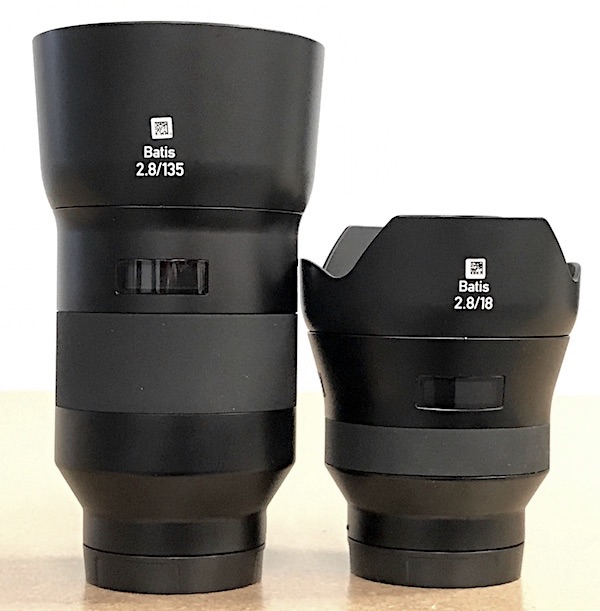
I’ve been slow to test the Batis lenses for several reasons. We can never get enough copies when they’re first released and by the time we do have enough copies I’ve got six other things to do. That said, I did give an overview of the Batis 25mm and 85mm a while back and even did a teardown of the 25mm of.
But I haven’t gotten around to testing either of the Batis at the extreme focal lengths: the Batis 18mm f/2.8 and the Batis 135mm f/2.8. That’s a shame really because the Batis are generally excellent lenses, reasonably small to carry around, and, by FE mount standards not ridiculously high in price. So I finally got around to testing both of them and thought I’d just combine things into a single post.
MTF Curves
Batis 18mm f/2.8
We’ll start with the 18mm, which I was quite interested in testing. It gets a ton of positive comments, and Zeiss generally does a spectacular job with their wide-angle lenses. The MTF curves confirm just that. It has excellent resolution, not just in the center, but well out toward the edges. There’s little separation between the tangential and sagittal curves, indicating low astigmatism and lateral color.
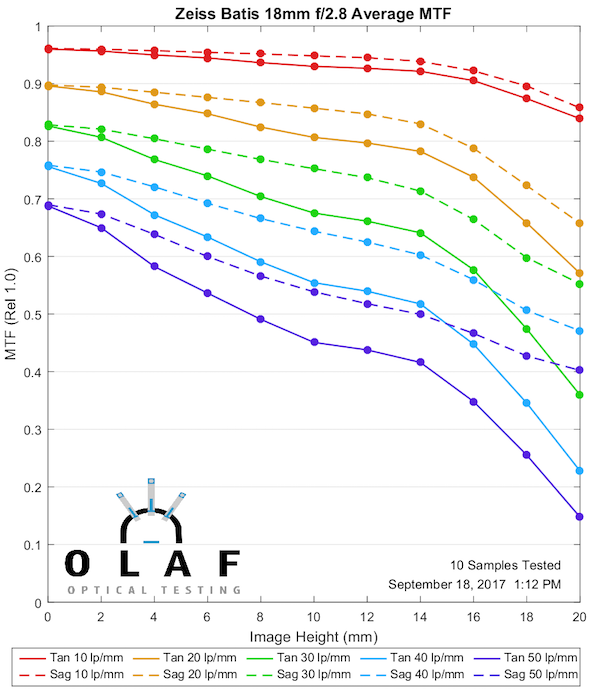
Olaf Optical Testing, 2017
The 10-copy variation curves are also very good for a wide angle lens. This is a nice, tight pattern.
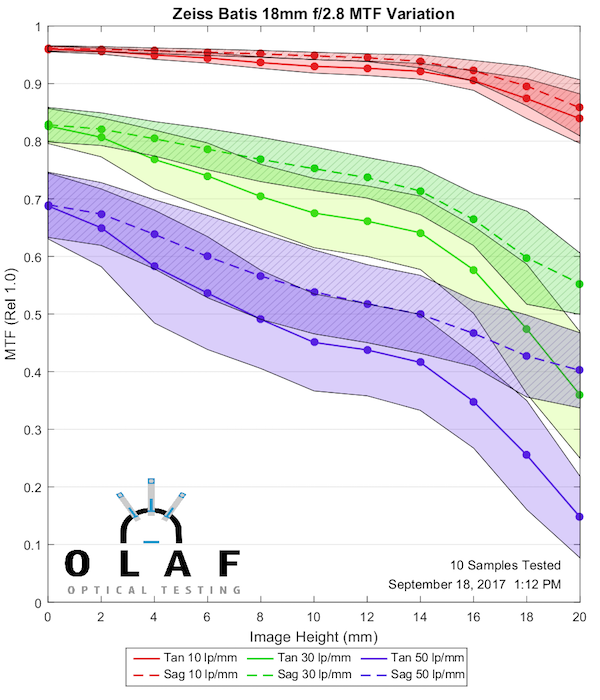
Olaf Optical Testing, 2017
Of course, it helps to show some comparisons to other lenses. Let’s start with comparing it to the Zeiss 18mm f/3.5 Distagon T*. The Distagon has an advantage in being tested at f/3.5 compared to the Batis at f/2.8. But the Batis still smokes it.
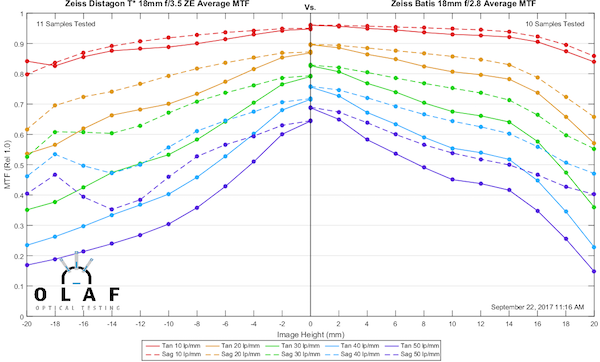
Olaf Optical Testing, 2017
Let’s make things a little tougher. The Zeiss 21mm f/2.8 Distagon has been THE wide angle lens for comparison since way before I’ve been testing. While they’re even in the center, the 21mm Distagon is a little better off-axis.

Olaf Optical Testing, 2017
Batis 135mm f/2.8
The 135mm focal length now has a huge number of excellent lenses, which makes me happy. I love that focal length. The Batis 135mm f/2.8 is certainly one of them.
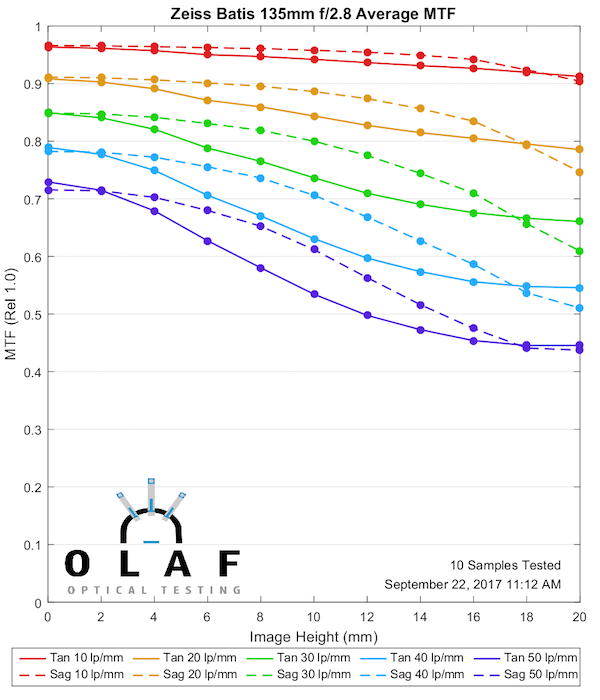
Olaf Optical Testing, 2017
The variance is also good, although we expect that with a 135mm lens.

Olaf Optical Testing, 2017
We’ll start comparisons by staying in-brand, with the Zeiss 135mm T2.1 CP.2 lens. They’re virtually identical. Well, as far as optical testing. They’re pretty easy to tell apart if you have them in your hands.

Olaf Optical Testing, 2017
The next comparison is with my ex-favorite lens, the Canon 135mm f/2. Remember, the Canon is being tested at f/2, so it is expected not to be quite as sharp as the f/2.8 lens. But OK, the Batis is certainly at least stop worth of better. This is pretty impressive.

Olaf Optical Testing, 2017
The Full Batis Line
I doubt anyone is choosing which Batis lens they are going to purchase on the basis of MTF charts. I’m using our comparison graphs to put all 4 of them together without taking up a lot of space, though, so that they’re in one place. Remember the two middle-range lenses are tested at a wider aperture than the 18mm and 135mm.

Olaf Optical Testing, 2017
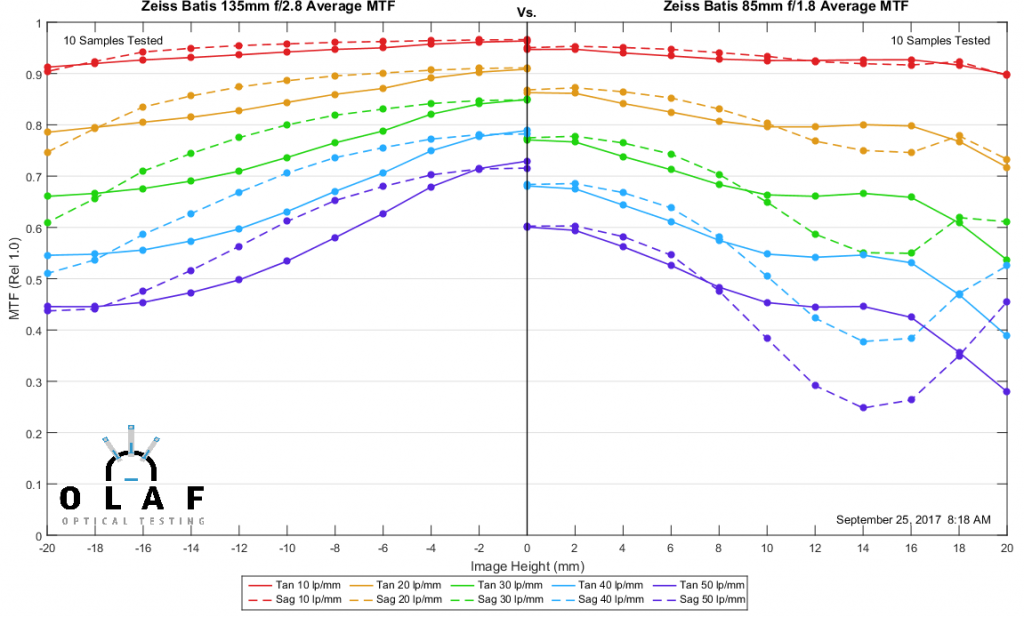
Olaf Optical Testing, 2017
Roger Cicala
Lensrentals.com
September, 2017
What is best in life, Roger?
To crush the marketing departments. See them driven before you. And to hear the lamentations of their sales reps.
Author: Roger Cicala
I’m Roger and I am the founder of Lensrentals.com. Hailed as one of the optic nerds here, I enjoy shooting collimated light through 30X microscope objectives in my spare time. When I do take real pictures I like using something different: a Medium format, or Pentax K1, or a Sony RX1R.
-
Samuel H
-
Messier77
-
Mike
-
Roger Cicala
-
Roger Cicala
-
Roger Cicala
-
Roger Cicala
-
Athanasius Kirchner
-
Adrian
-
Roger Cicala
-
Lee
-
Jonathan
-
Brandon Dube
-
Samuel H
-
Messier77
-
Claudia Muster
-
Roger Cicala
-
Les
-
Roger Cicala
-
Roger Cicala
-
TinusVerdino
-
Samuel H
-
Samuel H
-
Brandon Dube
-
Athanasius Kirchner
-
SpecialMan
-
Roger Cicala
-
Max Manzan
-
Messier77
-
SpecialMan
